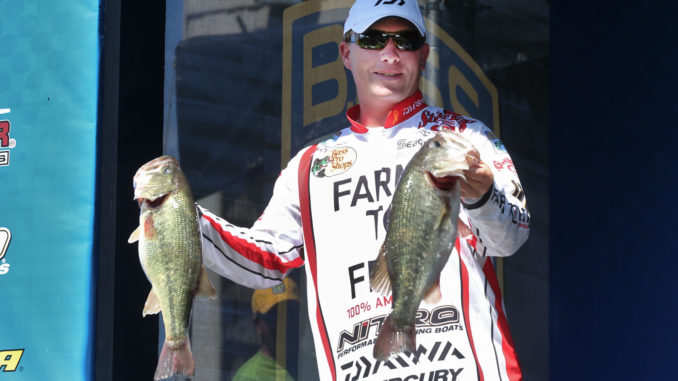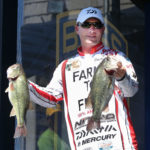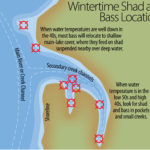
Just find the shad
Find the shad, and you’ll find the bass. That well-worn wisdom is true on Lake Wylie, especially in the winter. But to find the shad, it helps to know a little about them.
Lake Wylie’s largemouth bass predominately feed on two types of shad, according to David Goodfred, a fisheries biologist with the N.C. Wildlife Resources Commission. The first are gizzard shad, which tolerate cold water well, but quickly grow larger than bass can eat. The other is threadfin, which average 4 to 7 inches long, the perfect size for bass to eat.
Threadfins disdain cold water. They become stressed when its temperature drops to 50 degrees, and Goodfred said it doesn’t need to be much colder to kill them. That’s one reason jerkbaits are so effective when the water temperature is in the 40s. Their dips and dives perfectly imitate dying threadfins.
Temperature dictates where shad are during winter months
Both species swim into shallow water in fall, staying there until the temperature turns too cold. Then, they retreat to the comfort of deep water, mostly in main creek and river channels, Goodfred said. Bass eat shad in deep water, but they often hold in adjacent shallow cover and structure, which typically is in diving range of suspending jerkbaits. Bass can remain shallow even after shad skedaddle, he said. Those will eat any shad that’s still around or a jerkbait that looks like one. Shad may never leave the shallows during a mild winter, he said.
Threadfin shad are no longer stocked in Lake Wylie, Goodfred said. Located at a lower altitude, its threadfin don’t see die-off conditions as often as those farther up the Catawba River chain, where threadfin stocking continues.
Whatever they are eating, Lake Wylie bass are doing well. This past spring, Goodfred said the Commission sampling produced an hourly average of 100 bass, all in good condition. Lake Hickory, also known for quality bass fishing, had a similar sampling rate. Lake Rhodhiss typically produces about 70 bass per hour and Lake James about 50, he said.





Be the first to comment